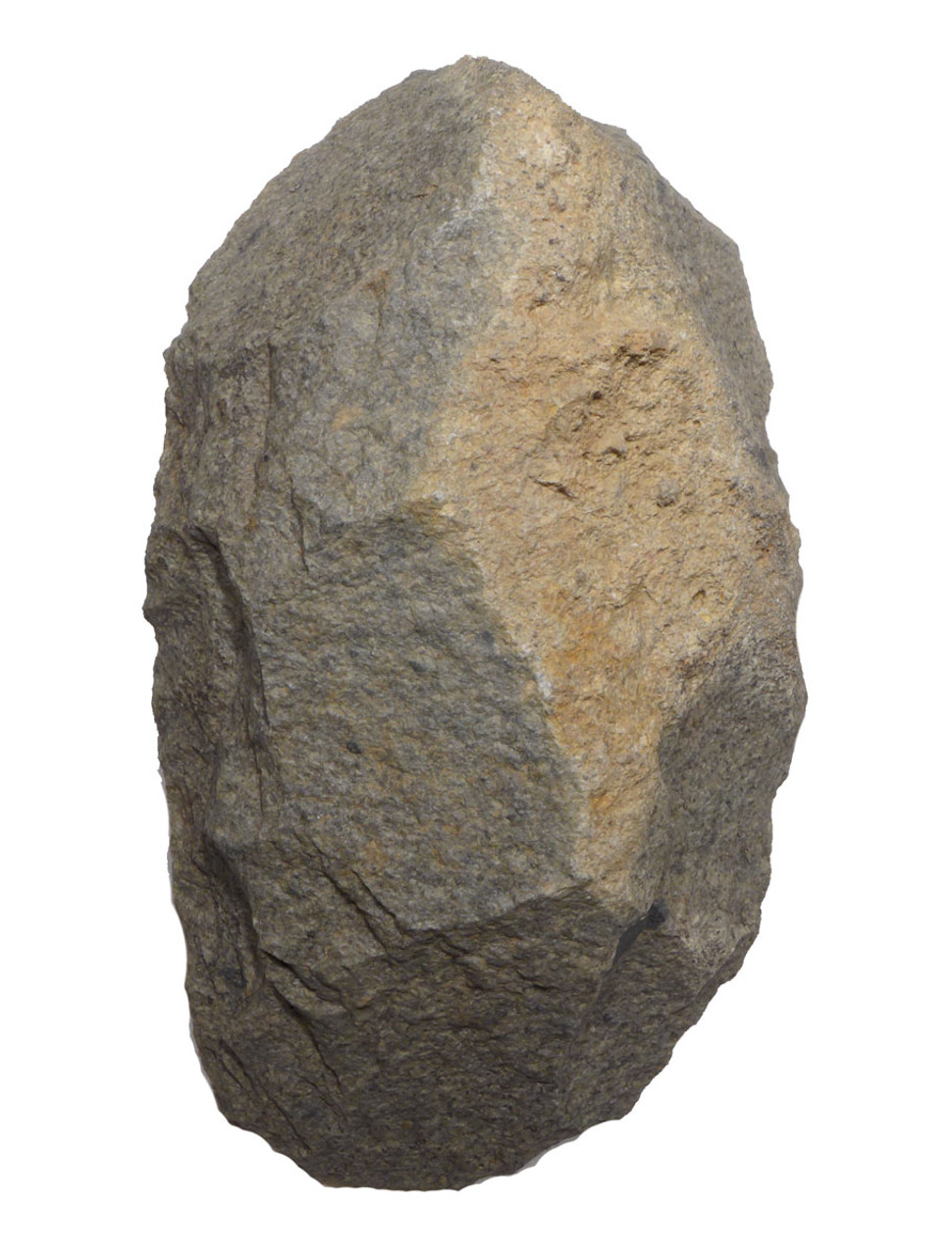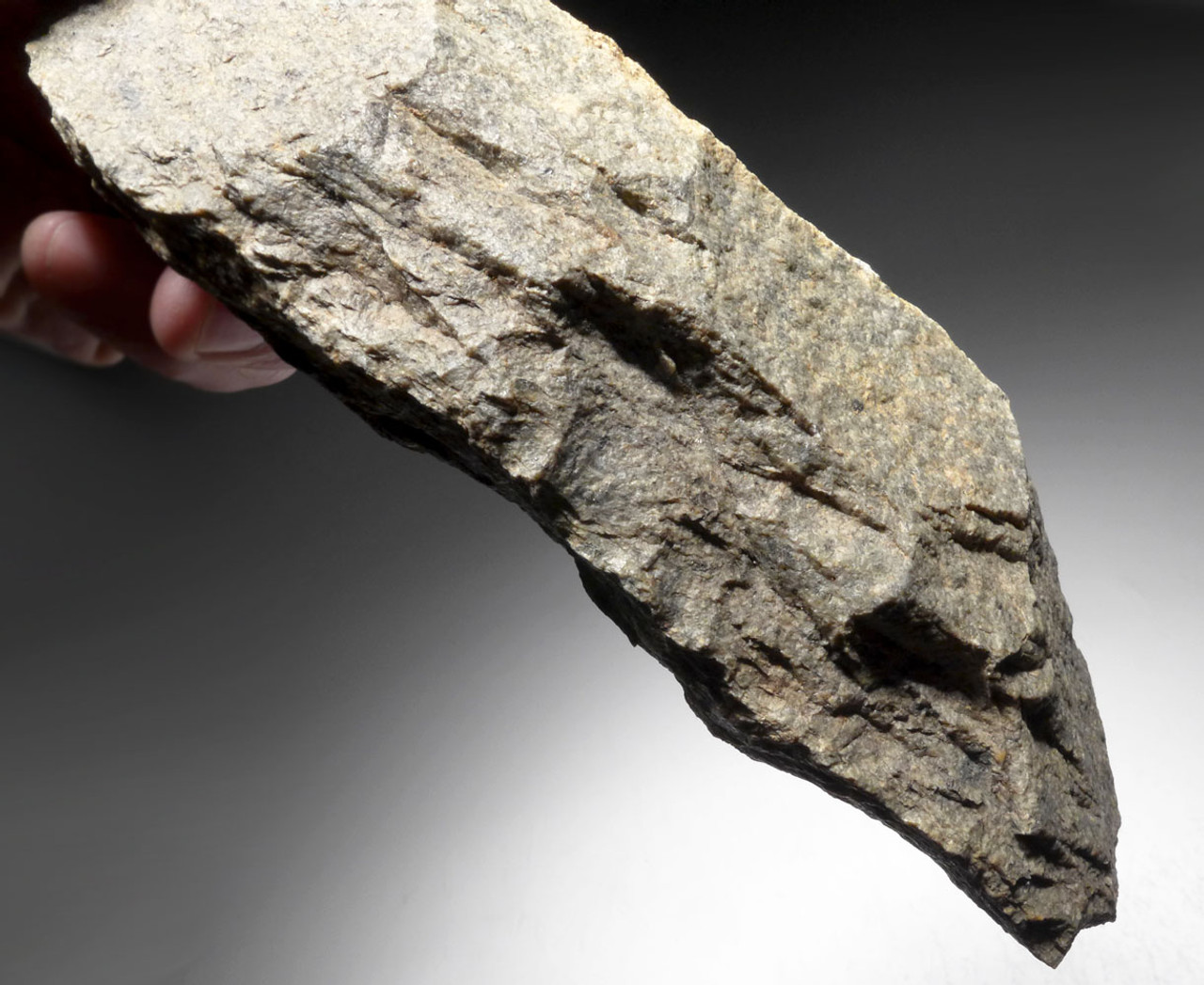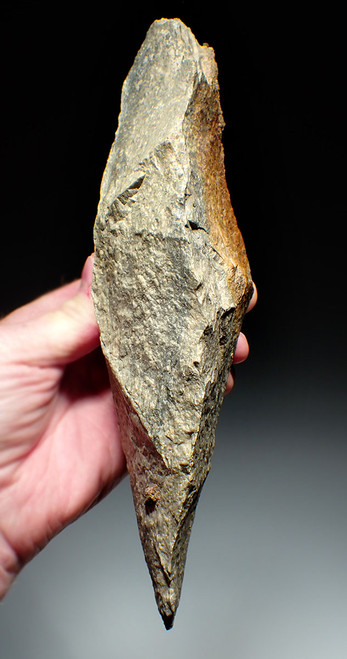Product Description
SEE MORE LOWER PALEOLITHIC ACHEULEAN STONE ARTIFACTS
This RARE East African Lower Paleolithic rhyolite handaxe was made and used by early humans of the species Homo erectus (ergaster). It comes from an old European collection and was originally surface-collected from an exposed Acheulian site in East Africa. This Lower Paleolithic tool represents the first intelligent design type known to science that was made by primitive humans. Prior to these Acheulian handaxes, only crude pebble and flake tools existed in the human fossil record.
This is an exceptional MUSEUM-GRADE East African Acheulean BIFACIAL CLEAVER HAND AXE. This example shows superb flaking and execution of this form. Tip and edges are intact and super sharp.
Because of the greater difficulty in working the rhyolite volcanic stone from which it was made, axes from this region and material are cruder in appearance than their counterparts of the same period, found in North Africa and made of more common quartzite. Quartzite is easier to shape compared to rhyolite so less secondary blows and a more fundamental design is always found on these hand axes of East Africa. Almost never are Paleolithic tools offered from this part of Africa. An absolute must for advanced collections displaying the diversity of Africa's human history and related stone tool development!
During the time of this axe, there were large elephant and hippopotamus species as well as giraffe species in Africa that primitive humans would have hunted. An axe like this was necessary to butcher such large kills.
 US DOLLAR
US DOLLAR
 EURO
EURO
 AUSTRALIAN DOLLAR
AUSTRALIAN DOLLAR
 CANADIAN DOLLAR
CANADIAN DOLLAR
 POUND STERLING
POUND STERLING


























